A treasure trove of memorable and historical moments
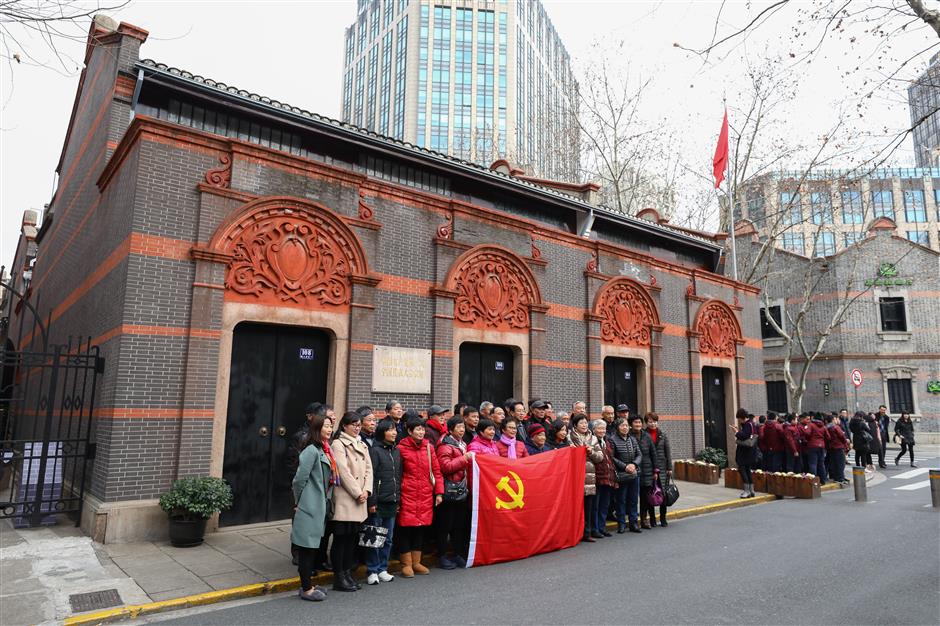
A group of people have their picture taken with the Communist Party of China flag outside the site of the Party's First National Congress.
Sandwiched between buildings in Shanghai’s trendy tourist enclave of Xintiandi sits a traditional old house that is the birthplace of a movement that revolutionized China and led to the modern juggernaut of today.
The building is the site of the First National Congress of the Communist Party of China, held in 1921. Today it stands as a memorial to the events that transpired there.
The memorial museum is open to the public. Last year, it hosted more than 832,000 visitors — people curious about the past and eager to relive its memorable moments. Crowds swelled during the recent Spring Festival holiday.
The site was first renovated in 1952 and decades later underwent major refurbishment and expansion in 2016 to commemorate the 95th anniversary of the Party’s founding.
The memorial contains narrative exhibitions on the founding history of the Party in the main building. Special exhibitions displayed in another house on the site generally last two months. Modern technology enhances the visitor experience.
“In the past, the exhibitions were mainly focused on cultural relics of that earlier era,” said Han Jing, an official with the memorial. “Now the focus is more on the history itself, with stories told through multimedia. We want visitors to appreciate the human aspects of this history.”
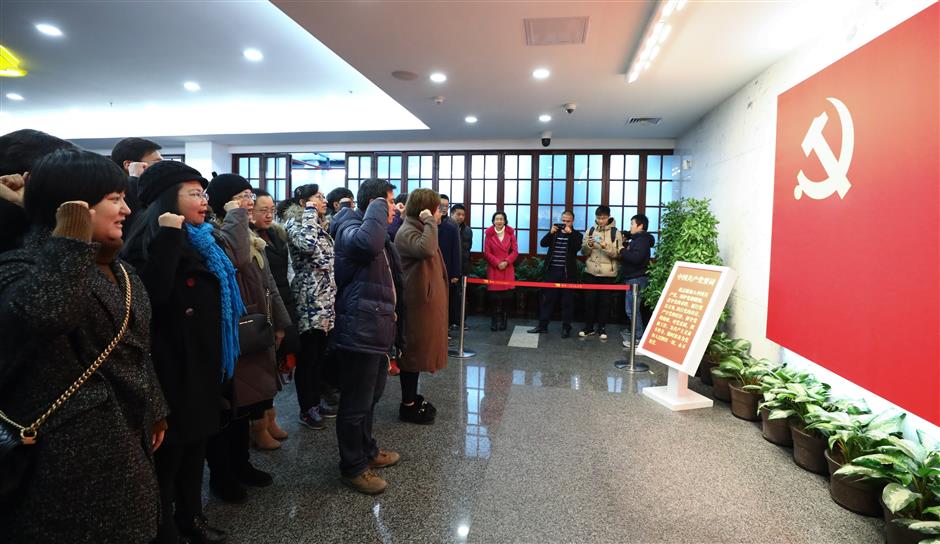
A group of people take an admission oath in front of the Party flag at the memorial museum.
Visitors can see how Western invasions wrought disaster to China, turning the country into a semi-colonial, semi-feudal society. They can learn how the Russian Revolution in 1917 gave the Chinese hope, inspiring intellectuals to embrace Marxism and the power of labor movements. That led to the founding of China’s Communist Party.
In addition to Chairman Mao Zedong, the other 12 Chinese delegates and two foreign representatives who attended the 1921 Congress all have stories to tell. These heroic tales include many Chinese Communist revolutionaries who played a role in the rise of the Party. Many of the stories are heartbreaking.
Of the 12 Chinese delegates, Deng Enming, a Shui ethnic and the only minority member at the Congress, sacrificed his life for the cause. At age 30, he was betrayed and imprisoned by enemies. He died in prison in 1931.
He Shuheng, an ardent communist at nearly 60 years of age, jumped off a cliff and was shot to death in an enemy siege in 1935.
Wang Jinmei worked tirelessly for the communist cause until overwork inflicted disease and caused his death.
Dutch national Henk Sneevliet, also known as Ma Lin, was a representative of the Comintern sent to Shanghai to help the founding of the Party.
Li Dazhao and Chen Duxiu, two co-founders of the Party of China, were unable to attend the 1921 Congress but sent representatives.
In the memorial museum, one of the most eye-catching items is an old typewriter used by Li Dazhao to type up Party documents.
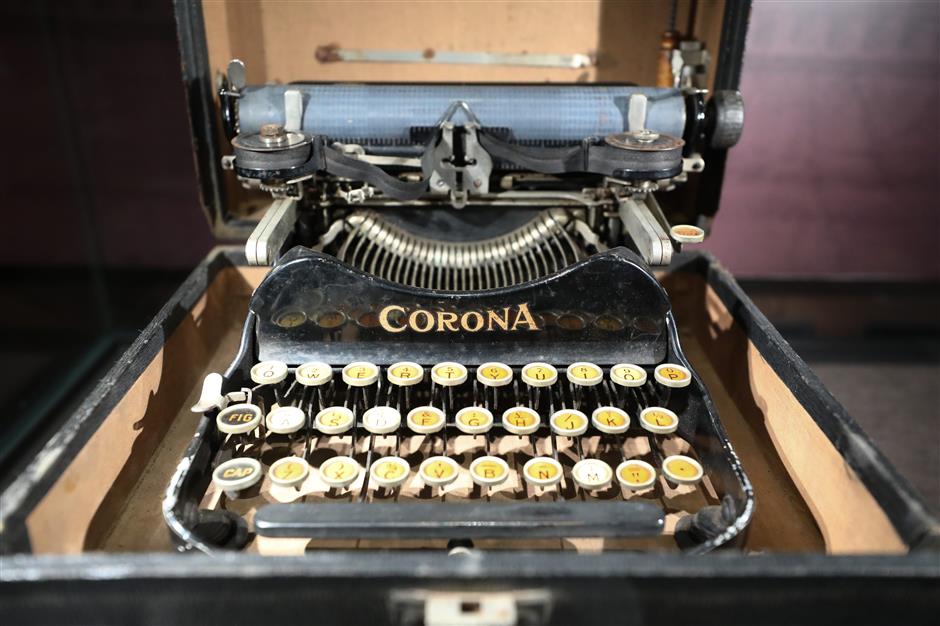
The typewriter that Li Dazhao once used is on display in the memorial museum.
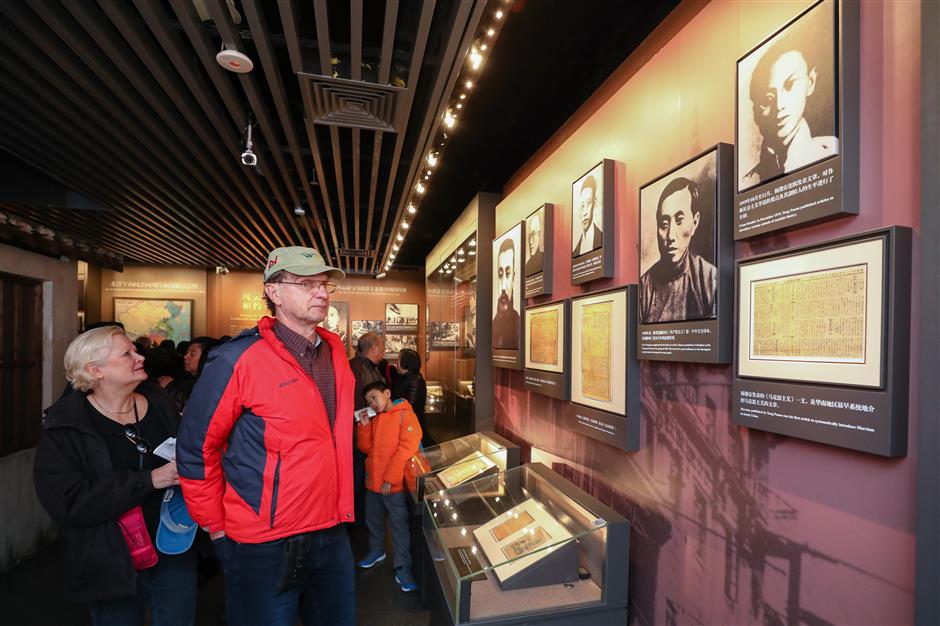
Two foreigners look at pictures of revolutionaries at the memorial museum.
The famous rub shoulders with lesser-known figures in the revolutionary cause.
Han cited the story about an unsung hero named Zhang Jingquan, who rescued files, books and magazines related to the revolutionary movement to prevent them from falling into the hands of the Kuomintang during China’s “White Terror” period that followed the failure of the “Great Revolution” in 1927.
Zhang took all the historical materials to his hometown in Ningbo, Zhejiang Province, and entrusted them to his father. His father hid them in a coffin to avoid being found by others.
Zhang died later, from disease, in another place. His father continued to keep the documents not knowing his son had died until after the liberation of China in 1949. He then donated them to Shanghai.
“Revolutionaries risked their lives for China,” said Han. “The events behind our history created an indomitable national spirit.”
After walking through the exhibitions in the memorial museum, visitors can follow a path to the actual site of the Congress meeting.
The room where the 15 delegates sat and debated, often in passionate terms, resonates with history. The delegates often had to reduce their words to whispers to keep the meeting secret from police officers of the old concession area who patrolled nearby streets.
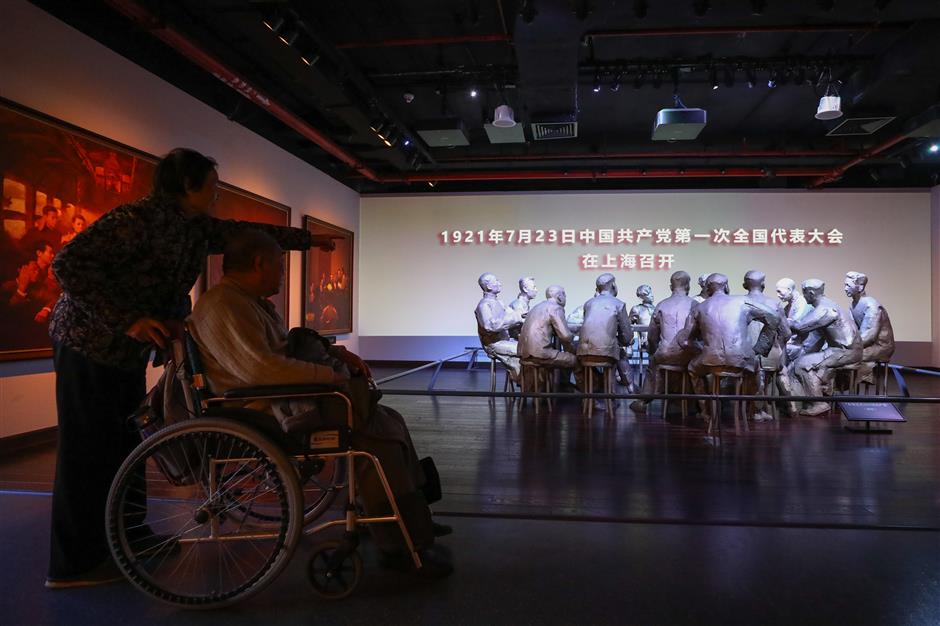
An elderly couple look at a group of statues depicting the First National Congress of the Communist Party of China.
The events and legacy of the Congress still reverberate today.
“During the most recent refurbishment of the memorial, a group of French people came to the then closed site and stopped at the gate,” Han said. “Then something extraordinary happened. They broke out singing the Internationale.”
Many visitors to the memorial museum are moved to tears by the exhibitions. One of them was Cai Daoxing, 49, who was accompanying his 6-year-old daughter as they walked past walls lined with photos of revolutionaries.
“During the Chinese New Year holiday, we visited several cultural sites, like the Nanjing Museum,” he said. “I brought my daughter here to learn about the Communist Party of China and to cultivate in her a patriotic heart.”
Old and young. Chinese and foreigners. Students and professionals. Visitors span every segment of society.
One older couple, who declined to identify themselves, told Shanghai Daily that they visit the Party’s birthplace every time they come to Shanghai.
“We just want to learn and remember,” the wife said as she pushed her disabled husband in a wheelchair through the exhibition hall.
On weekends, when crowds converge on the memorial museum, firefighters and high school students act as volunteer guides.
“Each generation has its own mission,” said Han. “The older generation of revolutionaries accomplished their mission, and we today will complete ours by everyone contributing to the best of their abilities.”
















